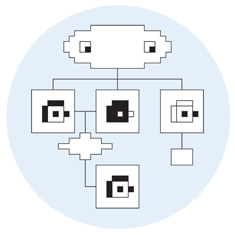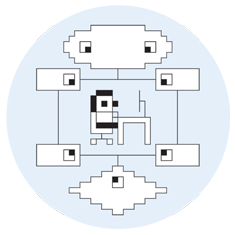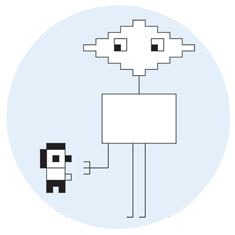Hired and Fired by Algorithm
Step 1
Finding job candidates
Seattle-based Textio, whose clients include Microsoft, evaluates job postings to predict if they’re likely to attract the right candidate. For example, phrases such as “top tier” and “mission critical” tend to turn female candidates off. San Francisco–based Gild sifts data from sites like LinkedIn and Github to tell customers such as Facebook and HBO when candidates might be open to a new post. KF4D, an algorithm from headhunter Korn Ferry, calculates the characteristics of an effective leader in a given industry and location, a model employers can then compare candidates against.


Step 2
Tracking employees
Following billions of dollars in fines for misconduct in recent years, many Wall Street firms have begun closely tracking workers. The goal: to both catch and forecast bad behavior. J.P. Morgan has designed a system to use data about things like whether individuals attend compliance classes to feed its predictive models of employee behavior, part of a $730 million overhaul of its management system. Goldman Sachs and Credit Suisse are investors in Digital Reasoning System, which analyzes billions of employee e-mails, phone calls, and online chats to predict and prevent illegal behavior.

Step 3
Quitting
According to Visier, a workforce analytics group based in San Jose, California, unwanted employee turnover costs the average large company $31 million a year. Visier uses two to three years’ worth of data from client companies like Yahoo, ConAgra, and Nissan to build predictive models that it says are up to eight times better than human intuition at forecasting which employees are at risk of quitting within three months. Each employee’s risk score is based on factors like age, salary, department, and time since last promotion. The company manages data for over two million employees.

Step 4
Finding the next job
Seattle-based Anthology (formerly known as Poachable) is like a dating app for the business world: employees looking for a change and businesses looking to hire each provide anonymous information about what they are looking for. A direct line of communication opens between users and businesses only if their interests match. Barely a year old, Anthology has clients that include Amazon, Facebook, IBM, and Netflix. Some 50,000 job seekers are using the app for free. Anthology has raised $1.8 million in funding.
Keep Reading
Most Popular
Large language models can do jaw-dropping things. But nobody knows exactly why.
And that's a problem. Figuring it out is one of the biggest scientific puzzles of our time and a crucial step towards controlling more powerful future models.
How scientists traced a mysterious covid case back to six toilets
When wastewater surveillance turns into a hunt for a single infected individual, the ethics get tricky.
The problem with plug-in hybrids? Their drivers.
Plug-in hybrids are often sold as a transition to EVs, but new data from Europe shows we’re still underestimating the emissions they produce.
Stay connected
Get the latest updates from
MIT Technology Review
Discover special offers, top stories, upcoming events, and more.